





Dopamine
Application instruction:
Dopamine – drug with vasopressor, cardiotonic action.
Form of release and structure
Dopamine is produced in the form of a concentrate for preparation of solution for infusions (in ampoules on 5 ml, on 5, 10, 250 or 500 ampoules in a cardboard pack or a box).
Is a part of 1 ml of drug:
- Active agent: a dopamine hydrochloride – 5, 10, 20, 40 mg;
- Auxiliary components: disodium sulfite, Acidum hydrochloricum 0,1M (to pH 3,5-5,0), water for injections.
Indications to use
- Shock of various genesis (cardiogenic shock; after recovery of volume of the circulating blood – hypovolemic, postoperative, acute and infectious and toxic anaphylaxis);
- Syndrome of "low cordial emission" at cardiac patients;
- Acute cardiovascular insufficiency;
- Arterial hypotension.
Contraindications
- Thyrotoxicosis;
- Tachyarrhythmia;
- Pheochromocytoma;
- Fibrillation of ventricles;
- Simultaneous use with monoamine oxidase inhibitors, galogensoderzhashchy anesthetics and cyclopropane;
- Hypersensitivity to drug components.
Dopamine should be applied with care to the feeding and pregnant women, children to 18 years, and also the patient with a hypovolemia expressed by a stenosis of the mouth of an aorta, a myocardial infarction, disturbances of a heart rhythm (ventricular arrhythmias, fibrillations of auricles), a metabolic acidosis, a hypercapnia, a hypoxia, hypertensia in a "small" circle of blood circulation, occlusal diseases of vessels (including a thrombembolia, atherosclerosis, the diabetic endarteritis obliterating a thromboangitis, an obliterating endarteritis, freezing injury, a Raynaud's disease), a diabetes mellitus, bronchial asthma (if in the anamnesis hypersensitivity to disulphite was noted).
Route of administration and dosage
Dopamine is entered intravenously kapelno.
The dose of drug is established individually, depending on the size of arterial pressure, severity of shock and reaction of the patient to therapy:
- Area of low doses: with a speed of 0,1-0,25 mg a minute (0,0015-0,0035 mg/kg a minute) – for receiving an inotropic effect (increase in sokratitelny activity of a myocardium) and strengthening of a diuresis;
- Area of average doses: 0,3-0,7 mg a minute (0,004-0,01 mg/kg a minute) – at intensive surgical care;
- Area of the maximum doses: 0,75-1,5 mg a minute (0,0105-0,021 mg/kg a minute) – at septic shock.
For impact on arterial pressure increase in a dose up to 0,5 mg a minute and more is recommended, or at a constant dose of a dopamine in addition appoint noradrenaline (Norepinephrinum) in a dose of 0,005 mg a minute at the body weight of the patient about 70 kg.
Irrespective of the applied doses at development of disturbances of a cordial rhythm further increase in a dose is contraindicated.
To children the drug is administered in a dose 0,004-0,006 (as much as possible – 0,01) mg/kg a minute. Children, unlike adults, need to increase a dose gradually, i.e. since the minimum dose.
Dopamine rate of administering for achievement of optimum reaction of the patient needs to be selected individually. In most cases it is possible to maintain satisfactory condition of the patient at use of doses less than 0,02 mg/kg a minute.
Duration of injections is defined by specific features of the patient. There is a positive experience of therapy lasting up to 28 days. Drug withdrawal after stabilization of a clinical situation should be carried out gradually.
For cultivation of drug it is possible to use 5% dextrose solution in Ringer's solution of a lactate, Ringer's solution of a lactate and sodium of a lactate, 0,9% solution of sodium of chloride, 5% dextrose solution (including their mixes). For preparation of solution for intravenous infusion of 400-800 mg of a dopamine it is necessary to add to 250 ml of solvent (for achievement of concentration of a dopamine of 1,6-3,2 mg/ml). Infusion solution needs to be prepared just before use (stability of solution remains for 24 hours, except mixes with Ringer-laktata solution – at most 6 hours). Solution of Dopamine has to be colourless and transparent.
Side effects
During therapy development of disturbances from some systems of an organism which are shown as is possible:
- Cardiovascular system: more often – bradycardia or tachycardia, stenocardia, heartbeat, pains behind a breast, increase in end diastolic pressure in a left ventricle, conductivity disturbances, decrease or increase in arterial pressure, a vasospasm, expansion of the QRS complex (the first phase of a ventricular complex reflecting process of depolarization of ventricles); at use in high doses – supraventricular or ventricular arrhythmias;
- Central nervous system: more often – a headache; less often – motive concern, uneasiness, a mydriasis;
- Alimentary system: more often – vomiting, nausea;
- Allergic reactions: patients with bronchial asthma have a shock, a bronchospasm;
- Local reactions: at hit of Dopamine under skin – necroses of hypodermic cellulose and skin;
- Others: less often – an azotemia, an asthma, a piloerektion; seldom – a polyuria (at introduction in low doses).
Special instructions
Before administration of Dopamine by the patient who is in state of shock the hypovolemia needs to be skorregirovat introduction of a blood plasma and other blood-substituting liquids.
Infusion should be carried out under control of arterial pressure, heart rate, a diuresis, minute volume of blood, an ECG. At reduction of a diuresis without the accompanying lowering of arterial pressure it is necessary to reduce the Dopamine dose.
Monoamine oxidase inhibitors can cause arrhythmia, headaches, vomiting and other displays of hypertensive crisis therefore the patient receiving monoamine oxidase inhibitors within the last 2-3 weeks, Dopamine is appointed in initial doses, it is no more than 10% of components of a usual dose.
18 years are younger than strictly controlled researches of use of Dopamine for patients it was not carried out (there are separate messages on development in this group of sick arrhythmias and gangrene which is connected with its ekstravazation (distribution of drug to skin and hypodermic cellulose as a result of injury of a vein) at intravenous administration). For decrease in risk of emergence of an ekstravazation Dopamine, whenever possible, is recommended to be entered into large veins. To prevent a necrosis of fabrics at ekstravazalny hit of drug it is necessary to carry out immediately infiltration of 0,9% by chloride sodium solution in a dose of 10-15 ml from 5-10 mg of phentolamine.
Purpose of Dopamine at occlusal diseases of peripheral vessels and/or the IDCS (dessiminirovanny intravascular coagulation) in the anamnesis can lead to the sharp and expressed vasoconstriction, further – to a necrosis of skin and gangrene (it is necessary to carry out careful control, and at identification of symptoms of peripheral ischemia administration of Dopamine needs to be stopped immediately).
Medicinal interaction
At simultaneous use of Dopamine with some medicines there can be undesirable effects:
- Adrenostimulyatora, monoamine oxidase inhibitors (including furasolidone, Procarbazinum, селегилин), гуанетидин (increase in duration and strengthening of the cardiostimulating and pressor effects): strengthening of sympathomimetic effect;
- Diuretics: strengthening of diuretic effect;
- Inhalation medicines for the general anesthesia, derivatives of hydrocarbons (изофлуран, chloroform, cyclopropane, a halothane, энфлуран, метоксифлуран), tricyclic antidepressants, including Maprotilinum, cocaine, other sympathomimetics: strengthening of cardiotoxic effect;
- Beta adrenoblockers (propranolol) and phenyl propyl ketones: easing of effect of Dopamine;
- Guanetidin, guanadret, Methyldopum, мекамиламин, Rauwolfia alkaloids (the last prolong effect of a dopamine): easing of their hypotensive effect;
- Levodopa: increase in probability of development of arrhythmias;
- Hormones of a thyroid gland: perhaps mutual strengthening of their action;
- Ergotamine, ergometrine, oxytocin, methylergometrine: increase in vasopressor effect and risk of a gangrenosis, ischemia and heavy arterial hypertension, up to intracraneal hemorrhage.
Dopamine lowers anti-anginal effect of nitrates which, in turn, can reduce pressor effect of sympathomimetics and increase risk of development of arterial hypotension (simultaneous use is possible depending on achievement of necessary therapeutic effect).
Phenytoinum can promote emergence of bradycardia and arterial hypotension (depends on rate of administering and a dose), ergot alkaloids – to a gangrenosis and vasoconstriction.
Dopamine pharmaceutical is incompatible with oxidizers, alkaline solutions (inactivate a dopamine), thiamin (promotes B1 vitamin destruction), iron salts; let's combine with cardiac glycosides (the additive inotropic effect, increase in risk of arrhythmias of heart is possible – control of an ECG is necessary).
Terms and storage conditions
To store in protected from light, the place, unavailable to children, at a temperature of 8-25 °C.
Period of validity – 3 years.
In the aspiration to pull out the patient, doctors often go too far. So, for example, a certain Charles Janszen during the period from 1954 to 1994 endured more than 900 operations on removal of new growths.
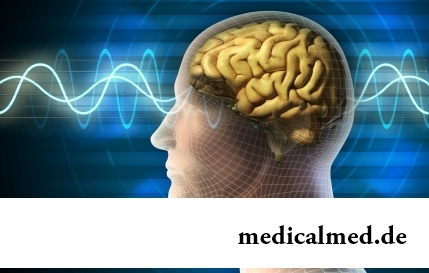
The brain of the person is studied not one hundred years, but the quantity of the riddles connected with this body increases rather, than reducing...
Section: Articles about health
It is pleasant to state a possibility of improvement of quality of life of people with problems of functioning of secretory system. Efforts of talented inventors created products which will be able to provide normal life activity of clients with moderate degree for...
Section: Articles about health
The number of long-livers is very small. One person from 5 thousand lives up to age of 90 years, and the centenary boundary steps over only one of 20 thousand. However, doctors claim that each of us is quite able to affect own destiny. At the same time it is not so much about living as long as possible, how many about an opportunity to keep physical and intellectual activity and to avoid decrepitude. We will also talk about the ways helping to achieve this result today....
Section: Articles about health
According to data of World Health Organization, the cataract is diagnosed almost for 7% of the population of Earth. Statistics we get sick...
Section: Articles about health
Separate food - the system of meal based on digestion physiology which is carried to improvement methods. According to nutritionists, the separate use of the carbohydrate and proteinaceous products demanding different conditions of assimilation helps to get rid from Bol...
Section: Articles about health
Many of us, probably, noticed more than once that from intellectual loadings at some point the brain as though "overheats" and "assimilation" of information is strongly slowed down. Especially this problem urgent for persons of age becomes more senior than fifty years. "Already badly I think", "the head will burst now", "memory as if is disconnected" - here that wants to be told at the time of information overload....
Section: Articles about health
It is difficult to revaluate importance of kidneys for an organism. These bodies not only perform work on purification of blood of decomposition products and выв...
Section: Articles about health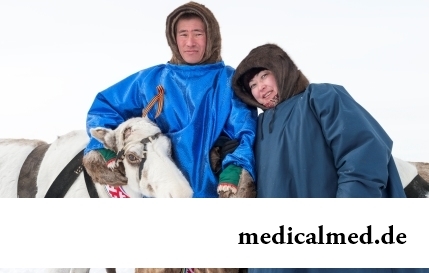
Traveling all over the world, many try to try the most exotic dishes of national cuisines. There is even a so-called gastronomic tourism which, according to gourmets, not only allows to receive new feelings, but also is capable to show life the friend...
Section: Articles about health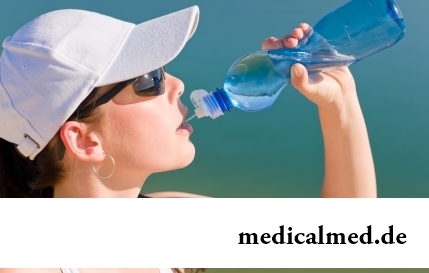
It is known that the person for 80% consists of water which participates in all processes of an organism. The person loses liquid daily – as a result of sweating, breath, an urination, and its insufficient completion due to various reasons can lead to dehydration of varying severity. Dehydration (dehydration) occurs already in case of loss of liquid in number of 1% of body weight and can result both in easy thirst, and by the death. In time to notice signs обезвож...
Section: Articles about health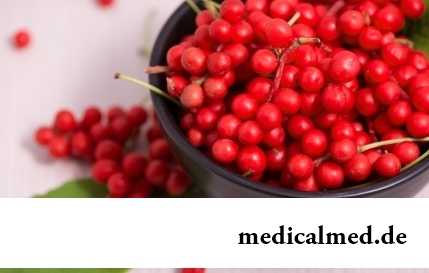
Statistically, pathologies of a thyroid gland in the world more than 500 million people have. Failures in work of this body conduct to is heavy...
Section: Articles about health
Life of the modern child is extremely active and difficult. Information strain which is experienced by the school student and did not dream pupils of last times. Careful parents, wishing well to the children, will organize a set of additional classes in circles, sports...
Section: Articles about health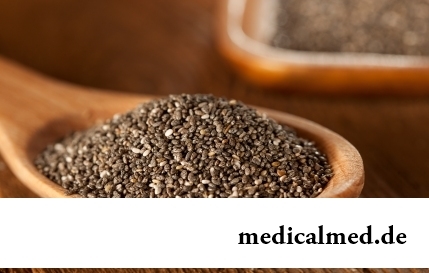
The chia plant, or the Spanish sage, is from South America. The indigenous people of the continent since ancient times used its seeds in food: small, but very nutritious kernels, in a form the reminding fasolina. Indians knew about useful properties of seeds of a chia, and applied them to maintenance of vitality and increase in endurance before serious exercise stresses....
Section: Articles about health
The dietology, as well as other sciences, does not stand still. Food stuffs are exposed to comprehensive study, and scientists receive new and...
Section: Articles about health
Summer in the heat. Many are going to spend vacation abroad. Travelers the tender seas, rest on beaches wait, for sightseeing, campaigns on natural and cultural reserves. But, unfortunately, on vacation also problems about health can wait for us...
Section: Articles about health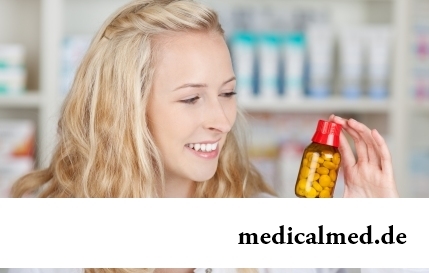
The next flu epidemic leads to the next panic, from year to year we give in on these manipulations: professionally alarming voice of the announcer in news, reports with calculation of the died patients, an interview with people in white dressing gowns and advertizing of anti-influenza means of different degree of inefficiency. All this reminds the Hollywood movies of epidemics threatening to destroy our planet. However, there is also one more similarity to cinema: everything comes to an end well. So, how to deal with the events, not in...
Section: Articles about health
Residents of big cities quite often have a disease which is known as the syndrome of chronic fatigue (SCF) today. This illness...
Section: Articles about health
For the city dweller the fitness is the most convenient sport. It is enough to acquire the subscription to the gym to get access to various apparatuses and an opportunity to train under the leadership of the experienced consultant. Many consider fitness on...
Section: Articles about health
Healthy lifestyle today in fashion, and many parents think of that the child from the early childhood played sports. Trainings will help it to become strong and hardy, will improve coordination of movements, and also will exert positive impact on mentality: it will become more collected and purposeful....
Section: Articles about health
Use of medicinal plants in therapy is urgent today, more than ever. The drugs made of curative herbs cannot on...
Section: Articles about health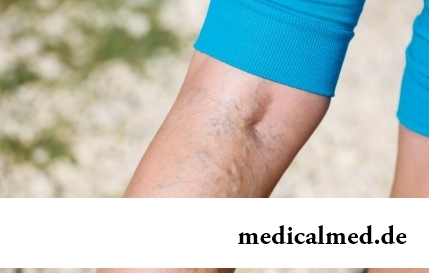
The varicosity has familiarly many, statistically, this disease more than a half of all adult population. As a rule, the varicosis affects preferential superficial vessels, and is shown by characteristic cosmetic defects. Guo...
Section: Articles about health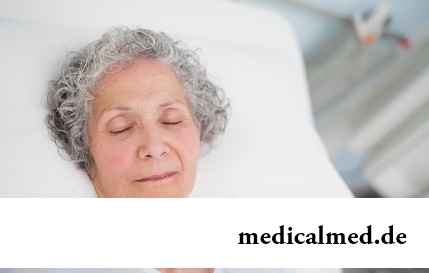
Some people consider what for medicine of the 21st century of secrets in the field of health of the person almost does not exist. It absolutely not so. The more answers scientists receive, the more the most difficult questions are raised for them by life. Besides, there are diseases which are not explained with science in any way of which existence people know for 100-150 years. These diseases meet not so often, but from some of them nobody is insured....
Section: Articles about health
The advantage of swimming for the person is so high that this sport is not only the most popular, but also is widely applied in copper...
Section: Slideshow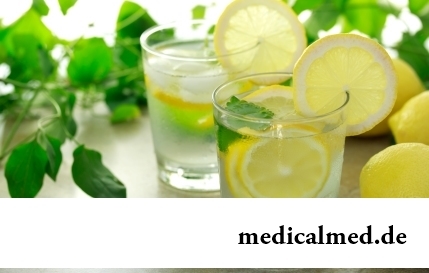
Water with a lemon - idle time in preparation drink which supporters of a healthy lifestyle already managed to appreciate. Used in a warm look and on an empty stomach, it is one of the most useful prophylactics allowing to prevent tens з...
Section: Articles about health
Musicotherapy – a treatment method which caused and causes a set of a controversy concerning its efficiency. However the facts are relentless: during the numerous researches curative impact of music on an organism was scientifically confirmed. Since then in a number of the countries the technique is included complex therapy of diseases of cardiovascular and respiratory system, dorsodynias and a backbone, psychosomatic disturbances and many other illnesses. The musicotherapy in a pedi is especially widely applied...
Section: Articles about health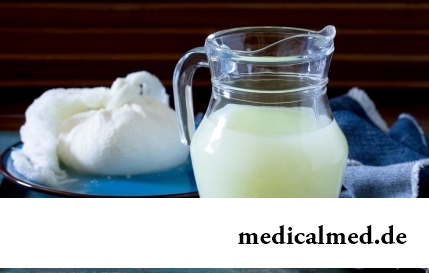
Milk and products of its processing by right occupy one of the main places in a diet of the modern person. They contain necessary...
Section: Articles about health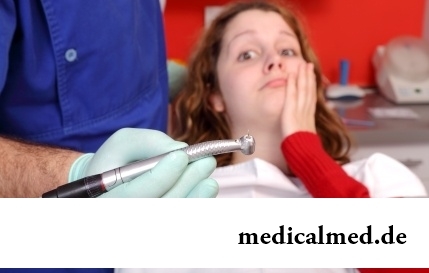
Statistically, can only one of ten of our compatriots brag of a decent condition of an oral cavity. Six teeth affected with caries are the share of the average Russian. For comparison, this indicator for Europeans almost six times exchanges...
Section: Articles about health
The trophic ulcer is not an independent disease. This heavy complication arising owing to a thermal injury (a burn or a frostbite), chronic pathologies of arteries or veins of the lower extremities, a diabetes mellitus, and also some defeats of connecting fabric, absorbent vessels, skin or nervous trunks. Pathology is shown in the form of not healing wound located on the internal surface of a shin, a foot sole, a heel or toes....
Section: Articles about health
